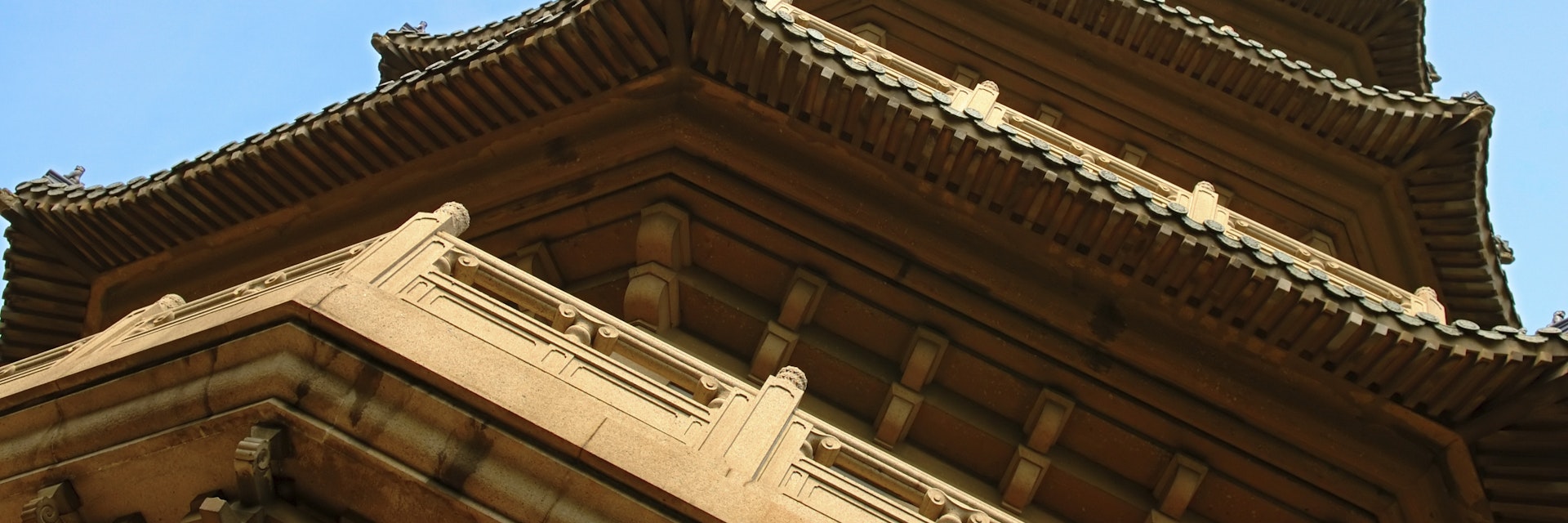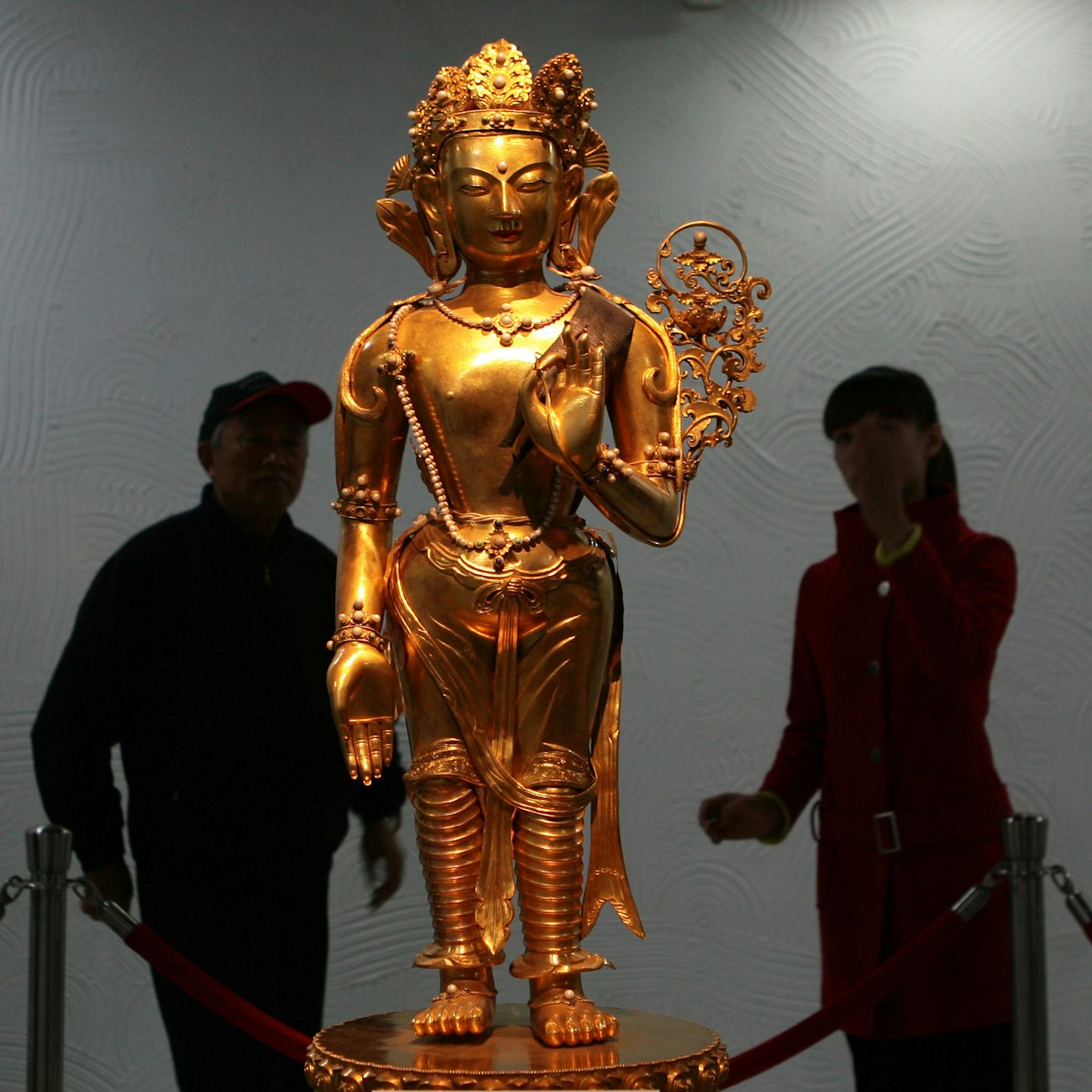This expansive temple complex contains one of the most historic buildings in Nanjing – the Beamless Hall (无梁殿, Wúliáng Diàn), built in 1381 entirely out of brick and stone and containing no beam supports. Buildings during the Ming dynasty were normally constructed of wood, but timber shortages meant that builders had to rely on brick. The structure has a vaulted ceiling and a large stone platform where Buddhist statues once sat.
A road runs on both sides of the hall: head to the right for the Dàbiàn Juétáng (大遍觉堂) memorial hall, dedicated to Xuan Zang (the Buddhist monk who travelled to India and brought back the Buddhist scriptures). Inside the memorial hall is a statue of the travelling monk, brush aloft, with a cabinet housing a golden model of a pagoda with part of Xuan Zang’s skull within it. To his left is a model wooden pagoda, also within a cabinet.
Uphill to the rear of the temple is the colourful Linggu Pagoda (灵谷塔, Línggǔ Tǎ). This nine-storey, 60m-high, octagonal pagoda was finished in 1933 under the direction of a US architect to remember those who died during the Kuomintang revolution. A vegetarian restaurant can be found nearby.
To get to the scenic area, take the metro to Zhonglingjie station, then catch bus 202 (?2, five minutes, every 15 minutes) from Linggu Si Jie, a short walk west of metro Exit 5a, past the shopping centre. Open-sided shuttle buses (?10, some resembling steam trains) regularly connect the area to the Sun Yatsen Mausoleum.




